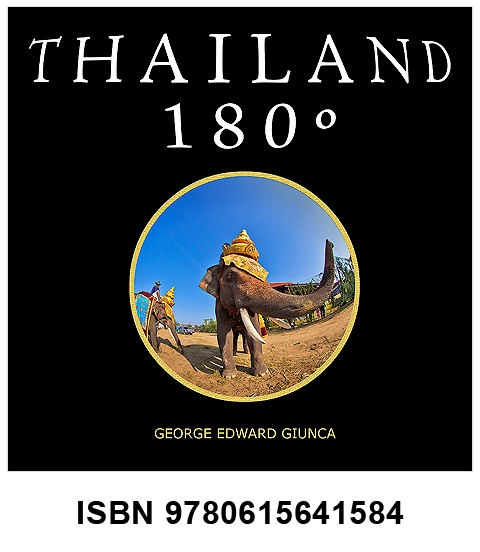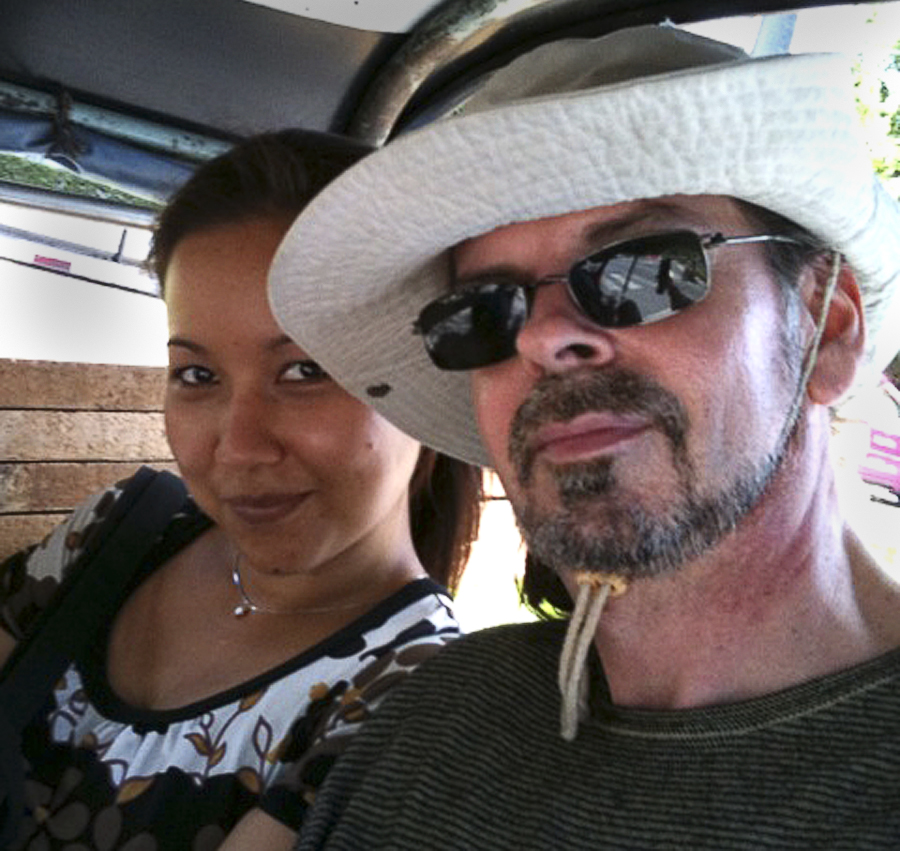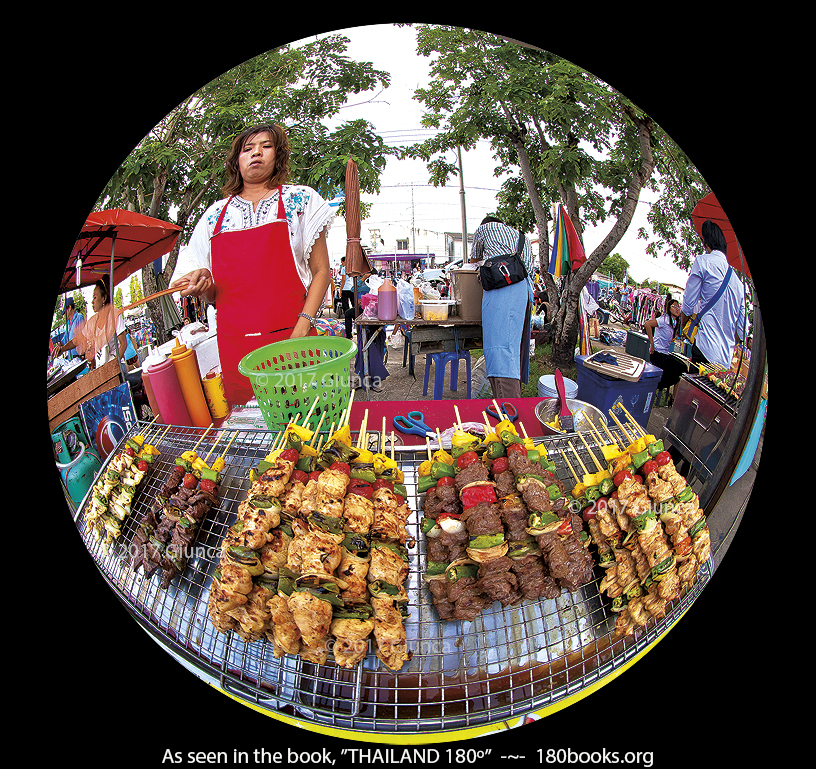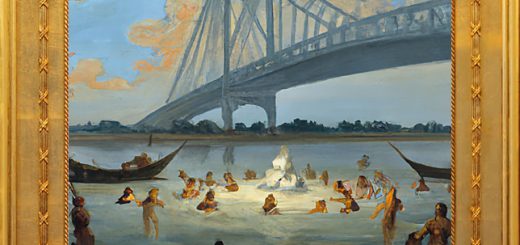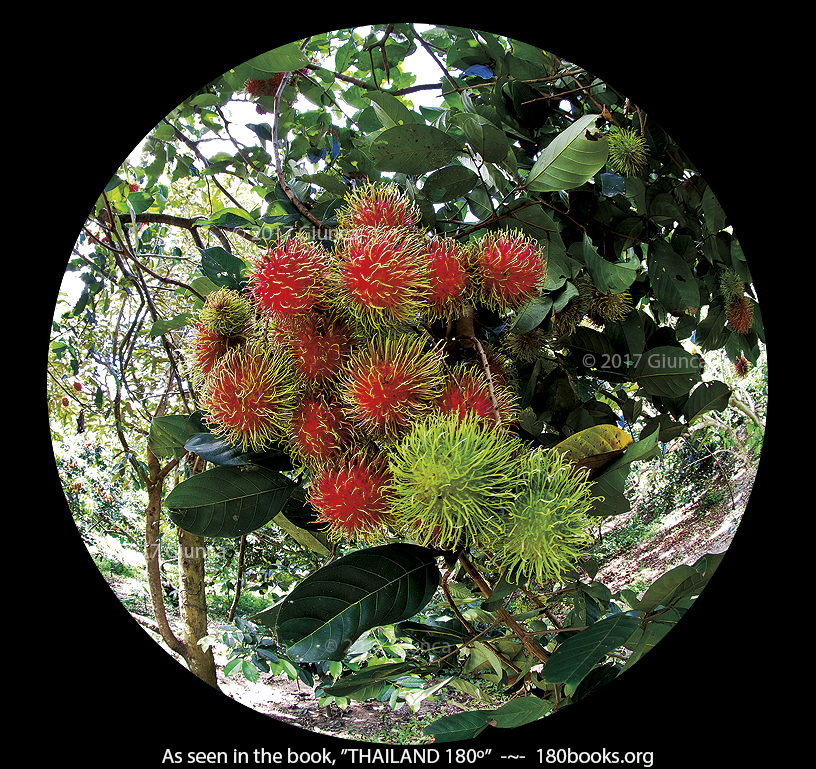Hill Tribes of Thailand, Part 1 (ชาวเขา)

Akha Tribe Welcome Performance, Chiang Rai (Image from the 180books.org Photo Collection by George Edward Giunca)
I had always dreamed of taking a trek through the mountains of Northern Thailand to photograph different Hill Tribes, but in practice, I really didn’t feel it was right to invade these people’s lives and privacy. Most have been able to keep their cultural identities and avoid contact with the outside world. After shattering my ankle, a trek was out of the question for at least six months, so we were forced to find alternatives. Three months after surgery, I became impatient and we decided to spend a couple weeks in the North of Thailand, and try to find a way to make some authentic photos, without disturbing their lifestyle, or my poor ankle.
ผมเคยใฝ่ฝันอยากจะเดินทางท่องไปในขุนเขาทางภาคเหนือเพื่อถ่ายภาพชาวเขาเผ่าต่างๆ อีกแง่ของความเป็นจริงก็ไม่อยากเข้าไปรุกรานความเป็นส่วนตัวของพวกเขา หลายชนเผ่าหลีกเลี่ยงการติดต่อกับโลกภายนอกเพื่อให้คงวัฒนธรรมขนบประเพณีอันเป็นเอกลักษณ์ของเผ่าตน อีกอย่างหนึ่งคือหลังจากผ่าตัดข้อเท้ามาแม้เป็นเวลา 3 เดือนกว่าแล้ว แต่จะให้ไปเดินทางขึ้นเขาลงห้วยคงต้องขอเลี่ยงดีกว่า ดังนั้นเราเลยวางแผนเดินทางแสวงหาสถานที่ที่แสดงวิถีชีวิตความเป็นอยู่ของชุมชนชาวเขาในแถบภาคเหนือโดยไม่ลำบากขาขวาของตัวเองมากนักภายในสองสัปดาห์

Kayor Tribe Women Weaving, Chiang Rai (Image from the 180books.org Photo Collection by George Edward Giunca)
While in Chiang Rai, our driver asked around for suitable places, and we found a village where five or six tribes were sharing land and offering tours. The village was authentic and to my horror, located on the side of a mountain, but somehow the excitement of finding such a place took my mind off of the ankle pain. In the village, each tribe had their own living quarters that were built just as I had seen in trekking photos, and each group made money by weaving, carving, farming and of course, tourism. It didn’t feel like a tourist trap though, and the tribes didn’t speak much Thai or English, they had great personalities and were eager to please. It was fun walking through the different areas, watching the people work on their crafts and seeing the differences in their manner and clothing. In two of the villages, some of the older ladies selling clothing, banged a gong and told us to be seated for a welcome dance. People from the tribe came running from all directions and performed, while I limped around taking their photos. (top Image)
มาถึงเชียงราย พี่คนขับรถตู้ของเราก็ช่วยเสาะถามได้ความมาว่าออกนอกเมืองไปมีหมู่บ้านชาวเขาที่รวมกันอยู่ 5-6 เผ่าที่เขาเปิดให้เข้าเยี่ยมชม เราก็เลยเดินทางไปตามที่เขาบอก ภายในหุบเขานี้มีชาวเขาอยู่แยกกันเป็นเผ่าที่มีขอบเขตพื้นที่ค่อนข้างชัดเจน บางกลุ่มทอผ้า, แกะสลัก, ทำไร่, และแน่นอนทีเดียวว่ามีนักท่องเที่ยวก็ต้องมีร้านขายของ ด้วยสภาพทางภูมิศาสตร์, ขนบประเพณี, วิถีชีวิต, วัฒนธรรม, ความเป็นอยู่ พวกเขาพูดแต่ภาษาของเขา มีเอกลักษณ์เฉพาะตัวและมีมิตรไมตรีงาม จนมิได้ทำให้เรารู้สึกว่าที่นี่เป็นสถานที่ท่องเที่ยวแม้แต่น้อย เราจึงเดินชมงานหัตถศิลป์หัตถกรรม เครื่องแต่งกายและบุคลิกลักษณะของพวกเขาพร้อมทั้งขออนุญาติถ่ายภาพอย่างเพลิดเพลิน บางชนเผ่าที่เชิญเราสองคนเข้าไปนั่งแล้วก็วิ่งตามเพื่อนพี่น้องมาแสดงร่ายรำต้อนรับแขกบ้านแขกเมืองให้เราชมตามภาพด้านบนสุด
Their choice of colors and patterns really impressed me. That and the fact that it was freezing cold in the mountains, led me to buy a beautiful, but very pricey jacket. Towards the afternoon, we came upon the weaver in the image above. I loved how the mother paid no attention to us as she worked on her weaving, while the daughter looked into space and day dreamed. Some very small children came out and practiced English with us, and helped us find the different tribes. Finally with way too many souvenirs, we said good-bye and headed for our van.
ผมประทับใจกับสีสันลวดลายการผสมผสานของเครื่องแต่งกายของพวกเขามาก ตอนขึ้นไปบนดอยนั้นหนาวมากๆ เลยตัดสินใจซื้อเสื้อแจ็คเก็ตราคาค่อนข้างสูงแต่ปักมือและตัดเย็บด้วยผ้าชาวเขามาตัวหนึ่งใส่กันหนาว เราเดินมาจนถึงแม่ลูกคู่หนึ่ง (ภาพด้านบน) ซึ่งแม่กำลังนั่งทอผ้าส่วนลูกสาวเหมือนกำลังนึกหรือฝันกลางวันอะไรซักอย่าง เด็กเล็กๆ บางคนก็ออกมาทักทายเป็นภาาาอังกฤษบ้างภาษาไทยภาคกลางบ้างแล้วก็พาเราไปตามเผ่าต่างๆที่อยู่ข้างเคียง สุดท้ายเราเดินกลับมาออกมาพร้อมของที่ระลึกมากมายเต็มไม้เต็มมือเลย

A Hmong Tribe Family at Doi Pui, Chiang Mai (Image from the 180books.org Photo Collection by George Edward Giunca)
In Chiang Mai, we found a group of Hmong Tribesmen, at Doi Pui. This area was loaded with Chinese tourists that had rented some of the tribe costumes and were running around everywhere snapping pictures of each other. We sat down, knowing that they’d be following their guide with a yellow flag and megaphone, back to their bus soon, and were eventually rewarded with their retreat. We followed paths around opium gardens and other magical plants, until we came across the family sitting on their portch, pictured above. The childern immediately asked for candy and did their best to model. The mother was full of personality and I think she was making jokes about our appearence to get the kids involved. I liked this photo better than the later, post candy shots.
ส่วนที่เชียงใหม่มีชาวเขาเผ่าม้งอาศัยอยู่บนดอยปุย แต่ที่นี่มีนักท่องเที่ยวมากมายโดยเฉพาะชาวจีนที่มาเที่ยวแล้วก็มักจะเช่าชุดชาวเขามาใส่ถ่ายรูป เราเลยนั่งรอจนไกด์ที่ถือธงและโทรโข่งนำพวกเขากลับไป เราเดินไปรอบๆ สวนหลากไม้นานาพันธ์ุและแปลงดอกฝิ่น จนเราเจอกระต๊อบหนึ่งที่มีครอบครัวชาวเขาเผ่าม้งนั่งอยู่ แม่เรียกเด็กๆ ที่กำลังร้องหาขนมมาโพสต์ท่าให้เราถ่ายรูปทันที

Lahu (Muser) Buskers, Mae Hong Son (Image from the 180books.org Photo Collection by George Edward Giunca)
On the long, hilly road to Mae Hong Son, we stopped at a lookout/bathroom spot and met the two Lahu buskers shown above. I wish we had recorded their music, as it was unlike anything I’ve ever heard! As we were leaving, one of the ladies became upset and frustrated with the language barrier–What did I do wrong?. I finally realized that I had foolishly put money in only one of their bowls, corrected the mistake and moved on.
As a behind, the behind the scenes comment, I have to confess that we’ve been out of the country, working on a second book, and I missed writing last week. Luckily my wife has again provided a video to make up for it. (Below) Some pics of the new jacket are at the end of the video…
ยอมรับผิดที่เราไม่ได้โพสต์บล๊อกเมื่อสัปดาห์ที่แล้วเนื่องจากเราเดินทางไปต่างประเทศเพื่อถ่ายทำหนังสือเล่มที่สองของเรา แต่คราวนี้ขอชดเชยให้ด้วยคลิปวิดีโอที่พี่น้องชาวเขามาแสดงร่ายรำต้อนรับแขกบ้านแขกเมืองมาให้ชม ช่วงท้ายบางตอนจะได้เห็นเจ็คเก็ตตัวที่ซื้อมาด้วยนะ
If you enjoyed this story, subscribe using the “Subscribe” button below, or Click “Like” on our fan page! Here
ผู้ ติดตามอ่านบล็อก สามารถติดตามอัพเดทโพสต์บล็อกได้โดยสมัครสมาชิกที่บล็อก หรือ กดไลค์ที่เฟสบุ๊คเพจของเราที่นี่ Here
“If you’ve ever contemplated taking a trip to Thailand, this is the next best way to visit this astonishing country. Giunca’s magnificent photo journey takes us to every corner of every region with all the ease of flipping glossy pages of this enthralling coffee table book. It’s all there: the glorious images of colorful festivals, awesome temples, the spectacle of an elephant round-up, the spice filled markets. He takes us with him everywhere in this amazing country. What a marvelous gift this would be for anyone who enjoys travel or especially for those where travel is impossible but want to sense and feel the rhythm and spirit of an exotic land. Bon voyage!”
–Thom Thomas, Playwright
Here’s How to Order Your Copy of THAILAND 180º Collectors EditionToday!
In Thailand —>>>http://www.thailand180.com/thaiorder.html
The Rest of the world: We are offering our book on Amazon.com, below list price and I’ll pay for the shipping within the United States! http://amzn.to/1knDPRR
Not Familiar with Our Book???
This show details the origin of 180 Books, a series of art/travel books illustrated with a circular fisheye lens. By using infographics, pictures from our THAILAND 180º book, and never seen before images from our vault, we’ll demonstrate this unique lens and present our unique books.
Also, because there’s nothing to watch on TV, here’s a trailer about our book, “THAILAND 180”
About the Authors
Photographer George Edward Giunca, and his Thai wife, Apisatha, have traveled around Thailand armed with a circular fisheye lens to create a photo essay on the rich cultural diversity, and abundant natural beauty of the Kingdom of Thailand. Fleeing from angry water buffaloes, slapping huge mosquitoes, watching exotic festivals and religious rituals, gorging on delicious spicy food, applying aloe vera cream to sunburned skin, wading through rice paddies, getting drenched to the bone by heavy monsoon rains, and gawking at breath-taking scenery; made it a journey of epic proportions! The result is the book, THAILAND 180º. Later, they traveled extensively through Myanmar, Malaysia, and India, gathering a massive collections of 180º photos. They currently live in Chiang Mai where they continue to blog and are now working on a CHIANG MAI 180º book.


